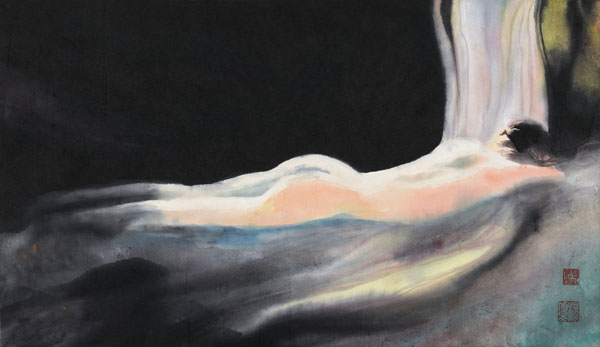 |
|
The Weekend (2002), ink-and-wash by Yang Ermin.
|
Traditional Chinese painting - especially ink-and-wash painting - has not taken too many local artists to the global arena. For centuries, their work centered around contrasting black with white and light with dark using varying densities of black ink. The artists have consciously or unconsciously worked toward finding a "way out" for their craft.
But Yang Ermin, 50, has shown how the art form can thrive by giving it a modern touch. He has added unconventional splashes of bright color to traditional ink-and-wash paintings.
An exhibition of Yang's new ink paintings, titled The Dream of the Future, opened on July 5 in Lodeve, a town in the Languedoc-Roussillon region of southern France.
Unlike the more durable canvas that is able to carry thicker layers of oil paint, rice paper used in ink painting is delicate and much less absorbent. It can easily be smudged or torn when painted with colors.
Yang likened his search for a new technique to get color on rice paper to that of a farmer experimenting in the field to find a new way to grow a crop. He "buried his head in rice paper", he says.
"This ancient country of mine has actually contributed very little to the art world, in modern times," says Yang, who was born in Hebei province and studied art since childhood.
He says that he often ponders over how ancient Chinese culture can be better shared with everyone.
"I was so bored with some of the lifeless stereotypes that were being used. I was miserable," Yang says of his earlier days.
Then he embraced the avant-garde "New Wave Movement" that flourished in China between 1985 and 1989. The movement was the beginning of a process to reinvent Chinese art that had been eroded by decades of political turmoil, during which China had been effectively cut off from the rest of the art world.
Li Xiaoshan, an art theorist and critic of the time, published what he called his "view of contemporary ink-and-wash painting", in which he wrote that this most traditional of Chinese practices had effectively died. He described how "enormously disturbing" that would be to modern art.
We Recommend:
